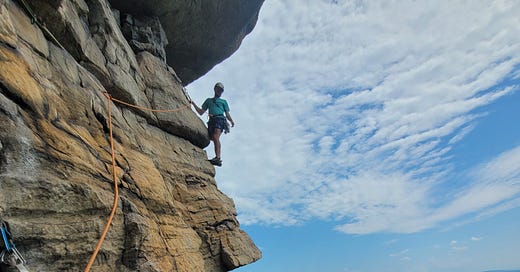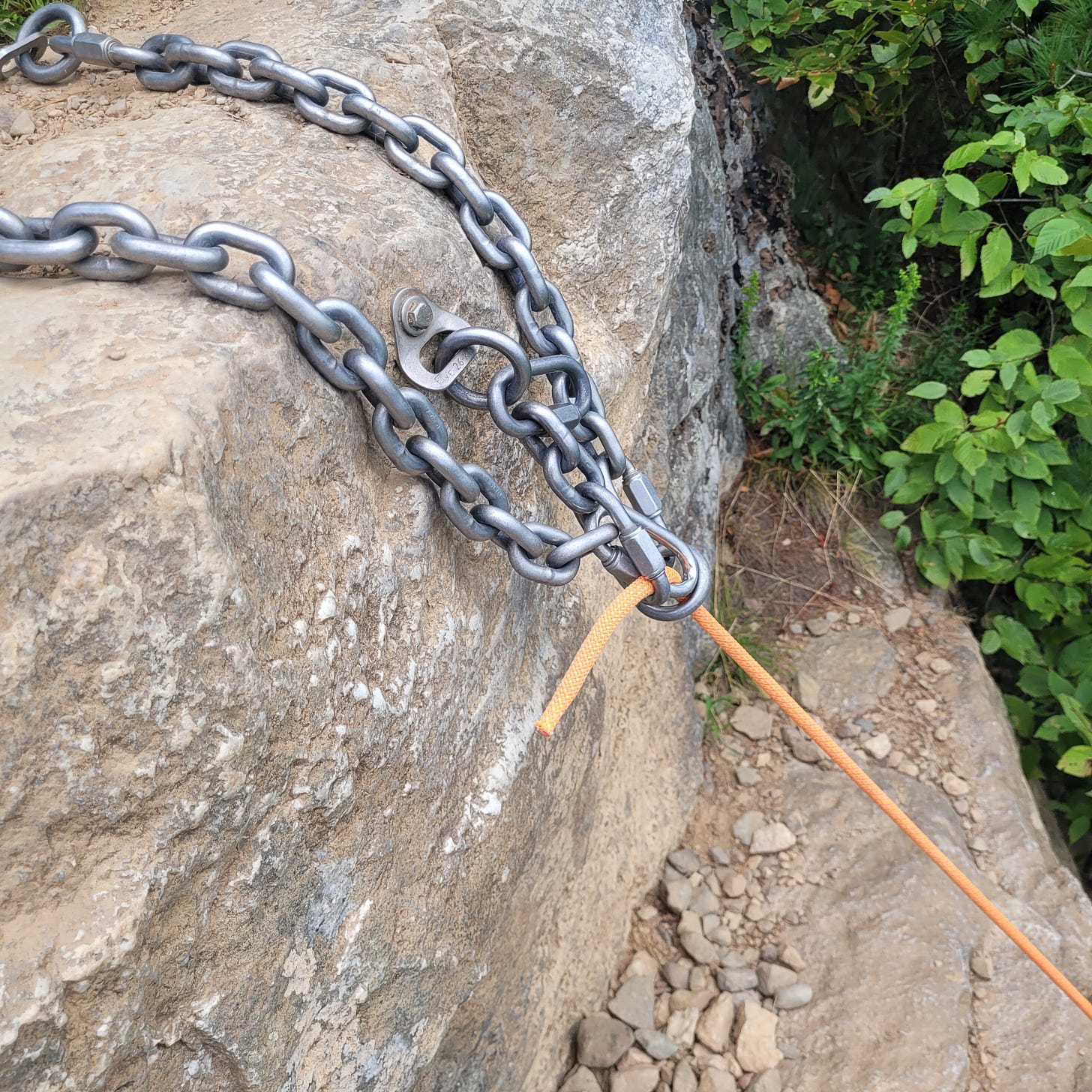Climbing ropes are like children. They come in all different shapes and sizes. Over time, they develop their own personalities. And if you leave them unsupervised for too long, they misbehave. I was reminded of this fact just a couple of weeks ago when I was out climbing recreationally with some friends.
The Scenario
My friends Patrick, Emily, and I just finished climbing one of the Gunks’ most classic climbs, Modern Times (5.8+). After topping out, we walked over to the nearby rappel station and rigged our ropes. Because we were climbing in a party of three with two ropes, we decided to tie them together and do a full-length, double-rope rappel. This would allow us to descend 60 meters (~200 feet) in a single shot.
The advantage of doing a double rope rappel is that it’s fun. Plus, it would be faster. However, the disadvantage is that you have to retrieve your ropes after you get down. Having that much rope out is heavy and hard to pull. But more importantly, when you have that much rope out beyond your control, there’s more opportunity for it to get stuck.
The alternative was to do multiple single-rope rappels. For this, you thread one rope through the chains and essentially fold it in half so you can descend down two strands of rope. This means you can only rappel half the distance of the full rope length, so 30 meters. In this case, we’d have to rappel three times with a single rope.
The Moment When Things Went Astray
Normally, when you retrieve your ropes, they release from the anchor system and come catapulting downhill. Ideally, in steep terrain, they fall down unhindered. However, sometimes, in less steep or ledgy terrain, they get caught up in boulders, on tree branches, in bushes, behind flakes, and so on. Sometimes, they even knock down loose rocks. This is annoying but often only a trivial inconvenience.
This time around, our rope didn’t come catapulting down. And it didn't get wedged in a crack or stuck in a tree, either. From the ground, we couldn’t see what was wrong. We yanked the rope. We shook the rope. We couldn’t get it unstuck. Little did we know, it got pinched and trapped in the anchor, only about six inches from the bitter end.
The Solution
Fortunately, at this point, we had fully retrieved the first (gray) rope that was tied to the second (orange) rope. So, after not being able to free the orange rope, we decided to use the gray rope to lead back up an adjacent climb to reach the top of the cliff. From there, we returned to the stuck rope and freed it from above.
After freeing the stuck rope, we opted for doing multiple rappels instead of running the risk of getting our rope stuck a second time. While three short rappels was probably slower than a single long rappel, it meant we had less rope out and could control the rope more effectively.
Before too long, we were back on the ground, safe and sound, with two ropes.
Debriefing the Incident
Besides taking care of people, the second most important thing I do as a climbing guide is manage ropes. On any given day, I inspect them, coil them, flake them, clip them, belay with them, stack them, flip them, fall on them, clean them, and so on.
My job is, more or less, to manage ropes. I know this, and I do it well. I keep track of the rope and monitor its whereabouts. I control where it gets placed, how it’s used, who carries it, and what it does. I supervise the rope incessantly.
But sometimes, I fall short on my supervision. Like a parent, I get tired. I make mistakes. In the context of my outing with Patrick and Emily, I decided to trust the rope to do its own thing, to act autonomously. I let it go too far beyond my control. And like a child with too much autonomy and inadequate supervision, the rope retaliated with misbehavior.
Convenience is a Double-Edged Sword
So, like most things in life, convenience can be a double-edged sword. In this case, trying to do a single rappel and go “faster” necessitated allowing more rope out of my control. In turn, this decision led to an inconvenience that took more time.
I admit I exposed us to a potentially negative outcome by not keeping a closer watch on the rope. Even my gut knew it. When I was standing on the ground after the rappel, watching Emily descend after me, I literally thought, “That’s a lot of rope up there. The only thing that could go wrong is the rope getting stuck when we pull.”
However, I also think we had some sheer bad luck. I’ve never seen a rope get stuck like that. It truly was an unlucky thing that happened. Sort of ridiculous if you think about it. Nonetheless, I won’t be doing that again.





good times, good times 😂 I personally enjoyed the bonus lap up high E. would you do the double rope rap again with just two rings? or never again?
Oh goodness, we’ve never seen anything like that before either! I haven’t seen abseil rings in a 3 like that before either…There is an area in Arapiles we regularly do this, join 2x60 ropes and even that takes two pitches of abseils!